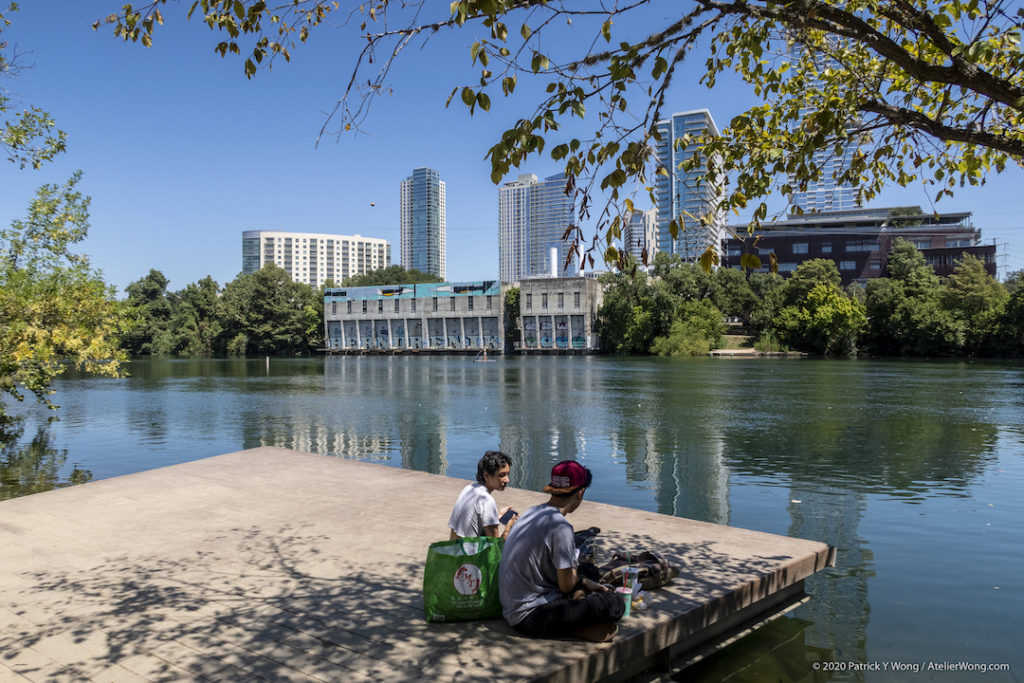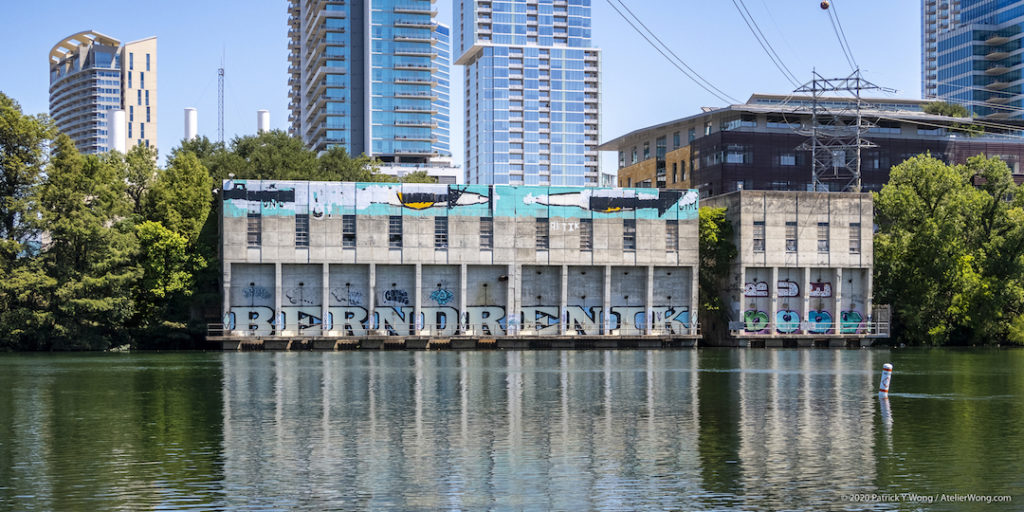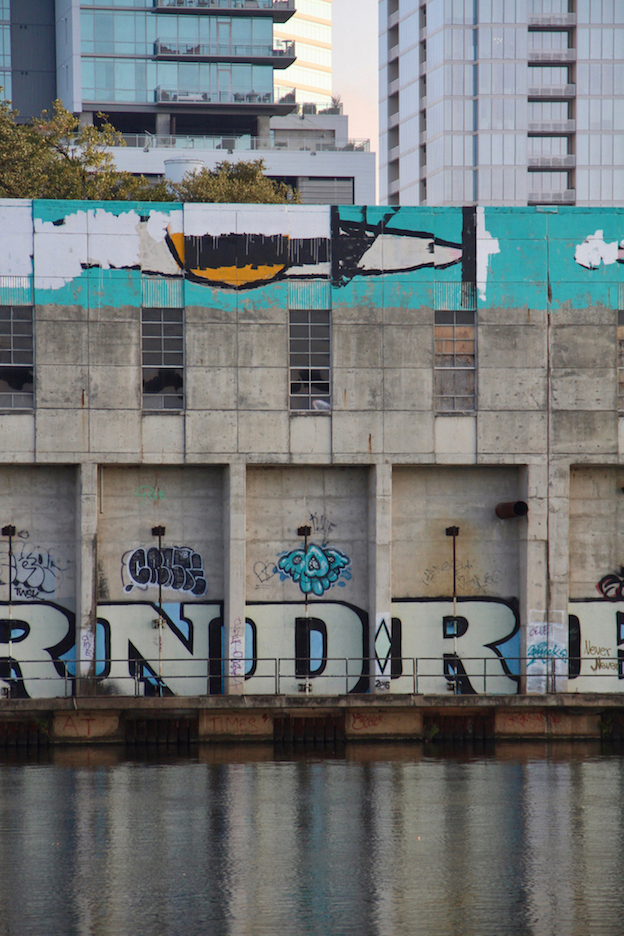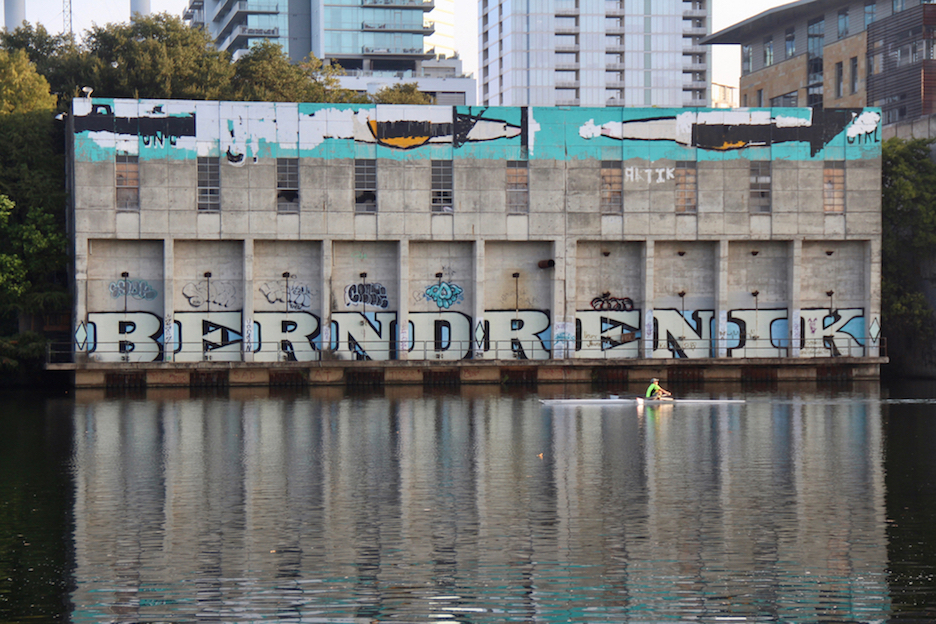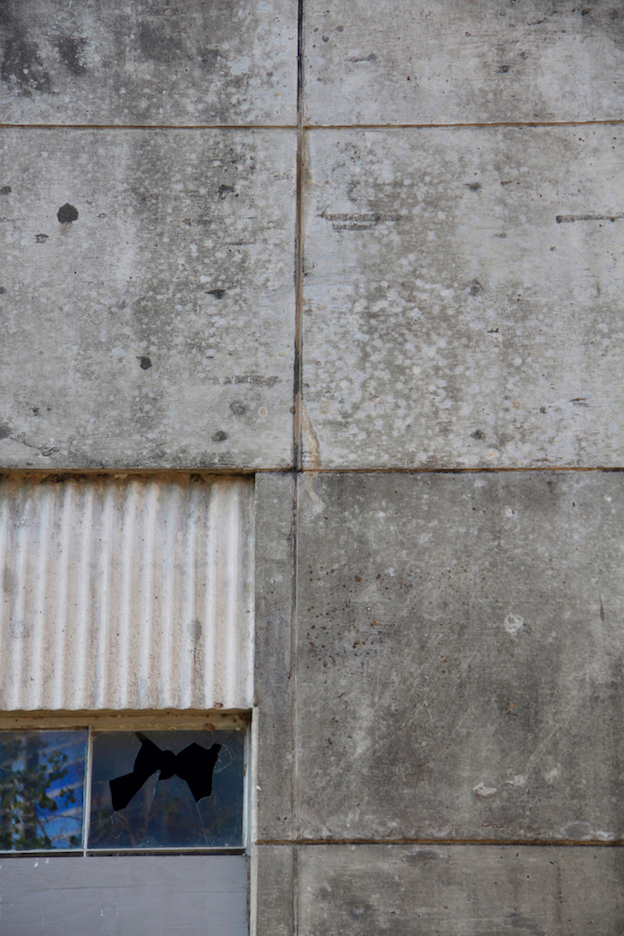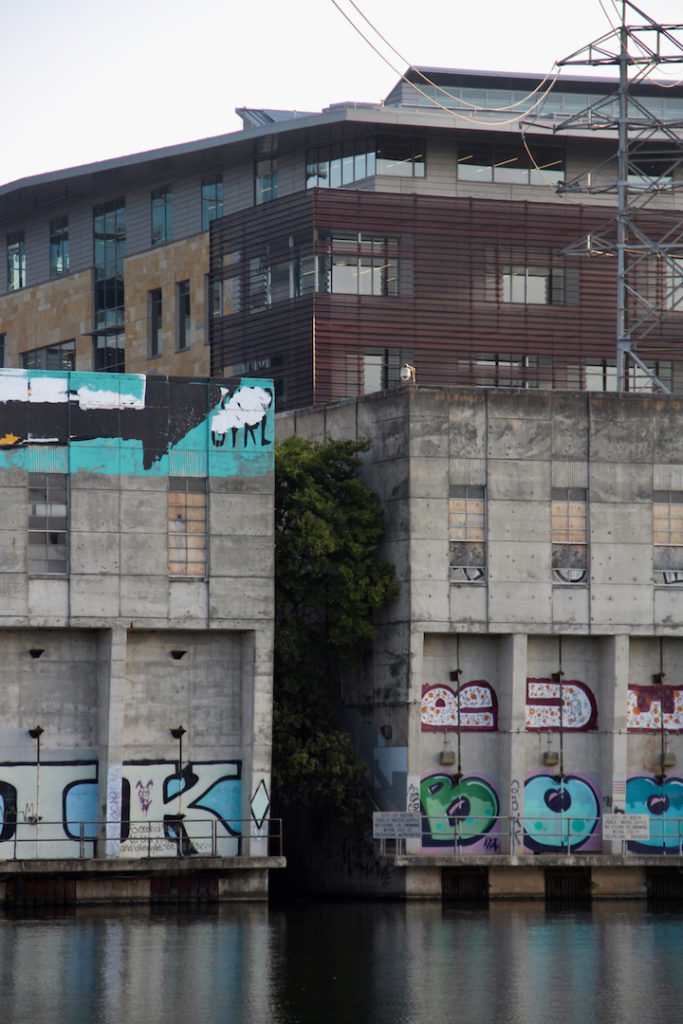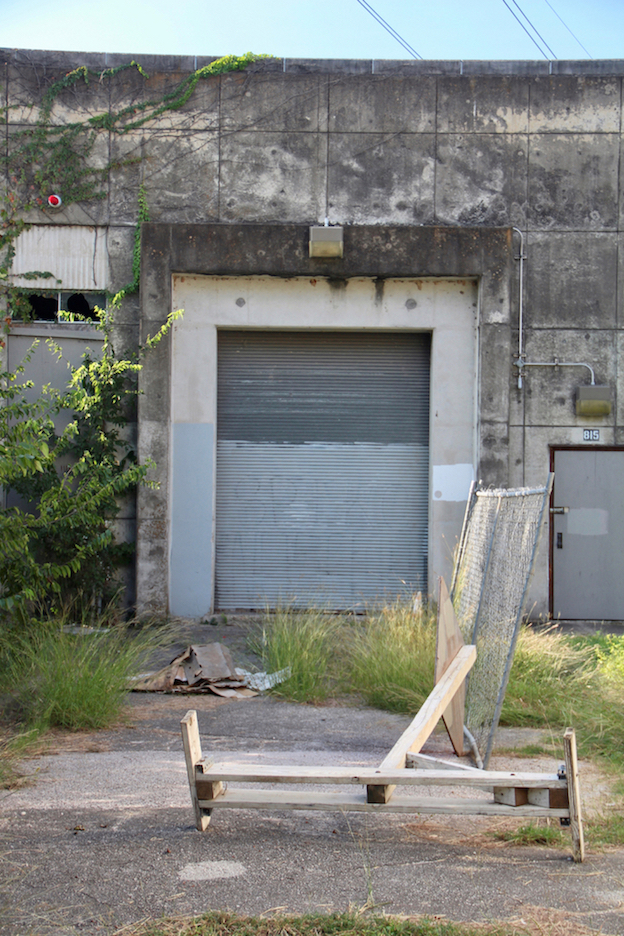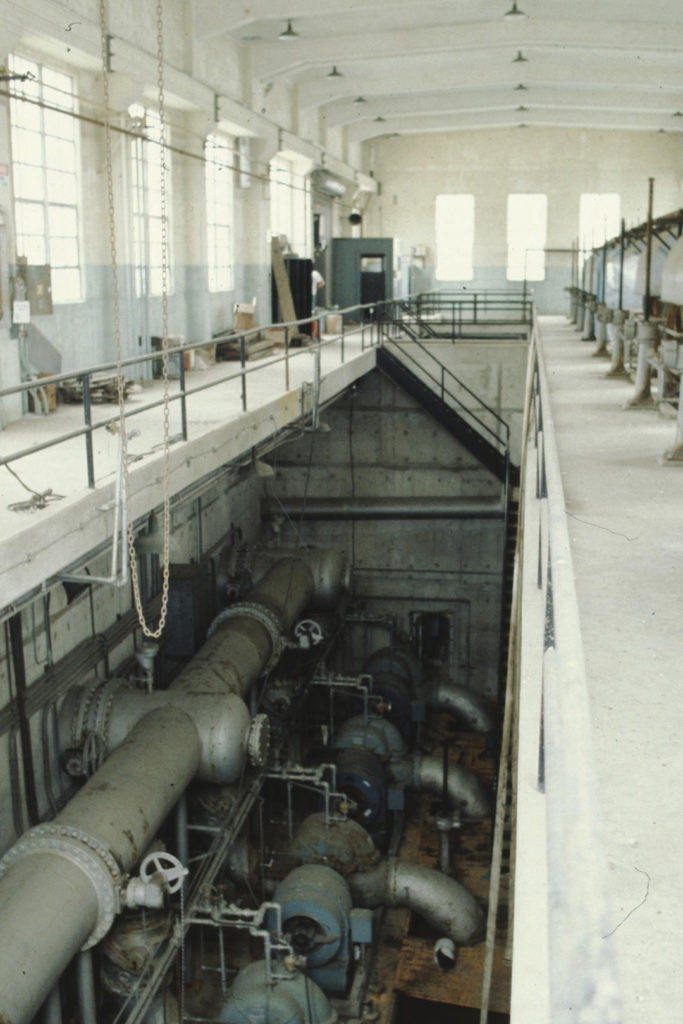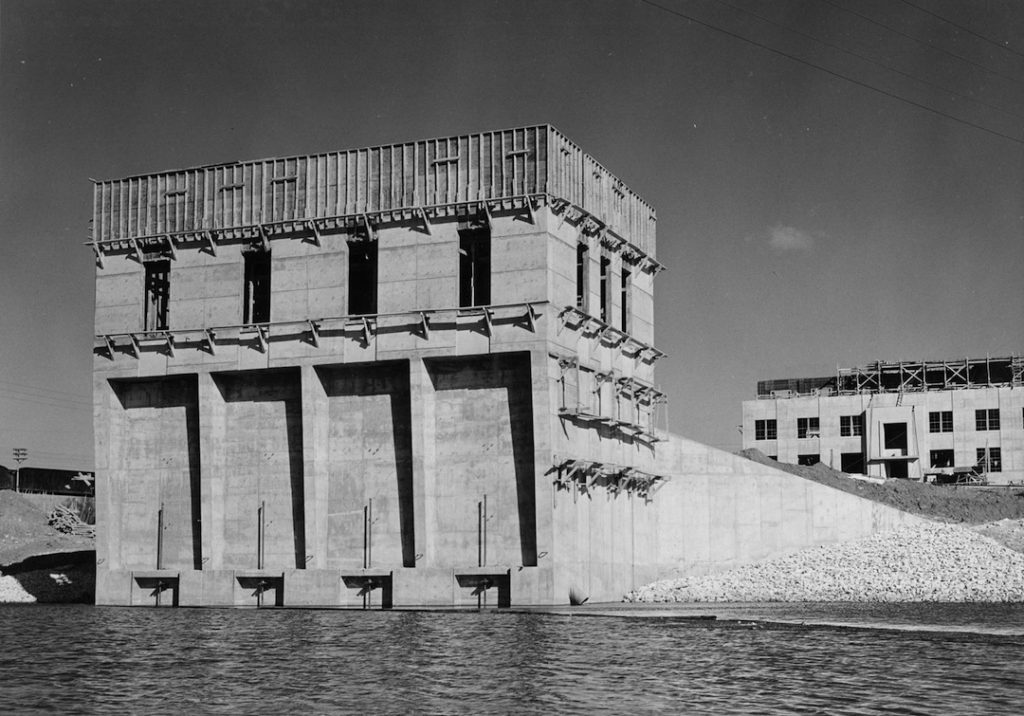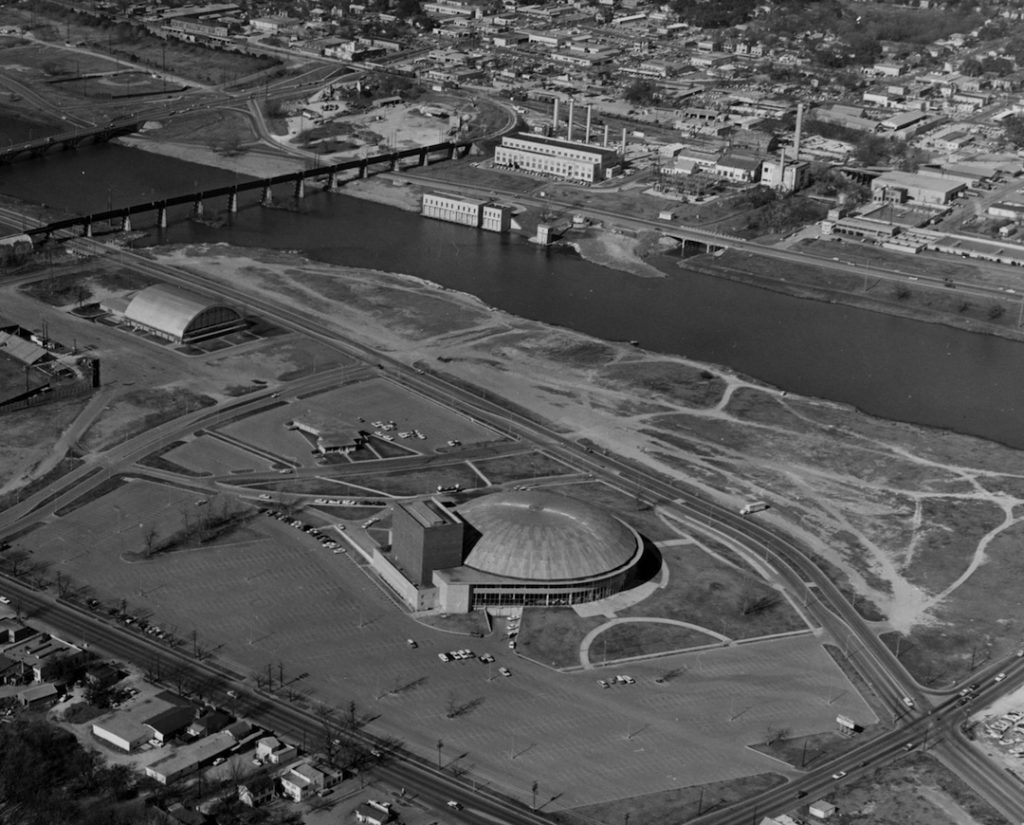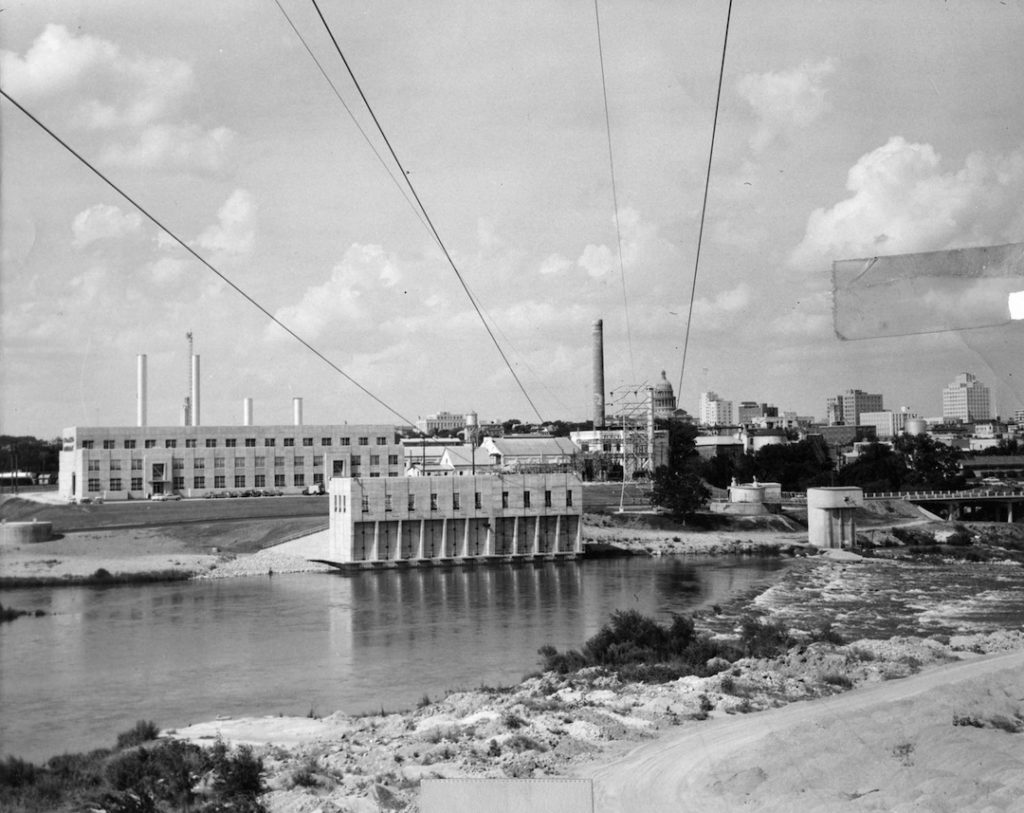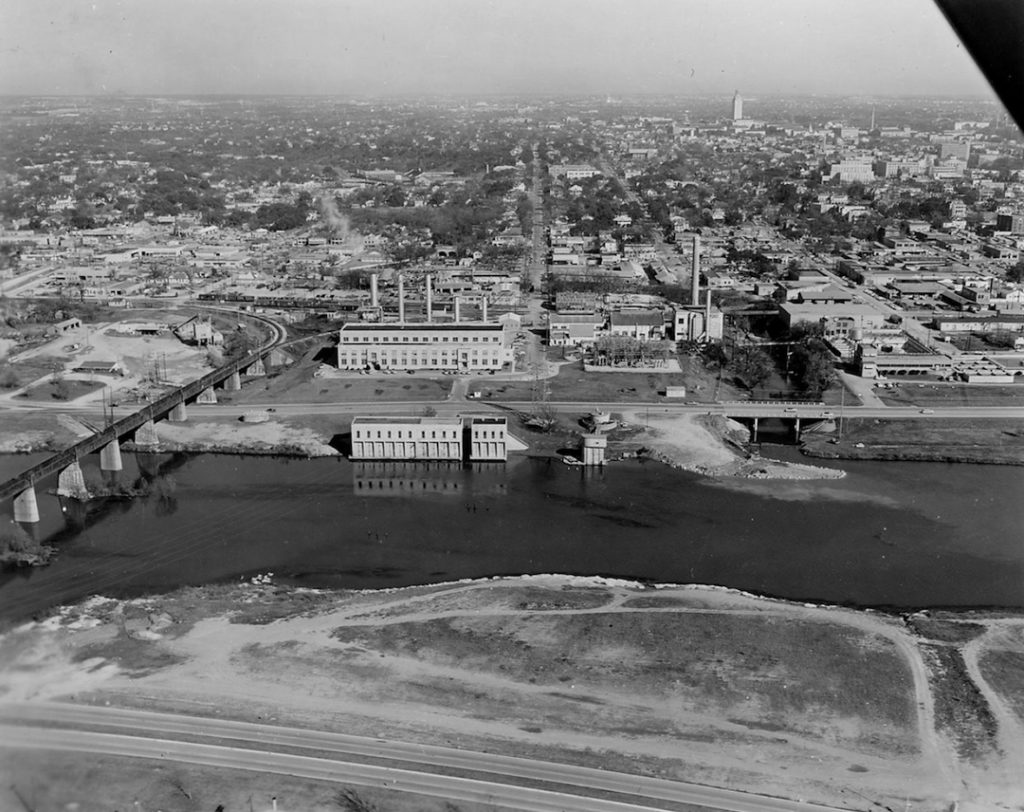Covered in broken windows and graffiti, the now-defunct Seaholm Water Intake Building played an integral role in providing power to Austinites in the latter half of the twentieth century. The prominent waterfront location of this Brutalist concrete structure makes it a unique example of public works engineering that is well-suited for adaptive reuse.
The Seaholm Power Plant was commissioned in 1948 to meet the city’s growing electrical demand. The purpose of the Water Intake Building was to draw in and filter cool water from the Colorado River before pumping it to the larger Turbine Generator Building via massive underground pipes. Once there, the cool water was used to condense steam from the plant’s boilers before being discharged into Shoal Creek. The intake building consists of two structures: at water level, 14 bays house sluice gates that opened to bring in river water. Overhead (at street level), walkways illuminated by narrow windows look down into the pump space.
The architecture of the Water Intake Building reflects the character of its parent: thick concrete walls and piers, vertical joints and windows, and an open floor plan illuminated by natural light. The two buildings exemplify the Art Moderne style, an offshoot of the Art Deco movement that emphasized more austere and geometric forms following the Great Depression. Over the years, the attractive proportions, robust construction, and timeless detailing of the intake facility have made it a much-loved landmark on the waterfront. Its windowless lower level has also provided the perfect canvas for enterprising graffiti artists (most notably, the enigmatic inscription “BERNDRENIK” documented on buildings and railcars across the country).
Today the Water Intake Building resides on parkland maintained by the City of Austin Parks and Recreation Department. Recently, the City has committed to redeveloping the intake facility for civic use. In 2018, a proposal by Chicago-based Studio Gang offered several options for integrating recreational and communal amenities while preserving the character of the original structure. – Bud Franck
